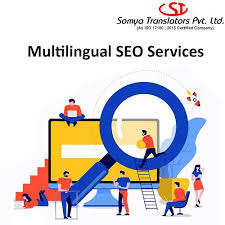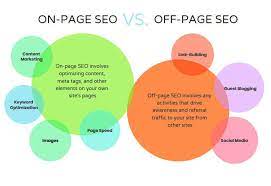The Importance of Multilingual SEO in Today’s Global Market
In a world where borders are becoming increasingly blurred and businesses are expanding their reach beyond local territories, the need for effective multilingual SEO strategies has never been more crucial. Multilingual SEO, also known as international SEO, is the practice of optimizing a website to target audiences in multiple languages and regions.
One of the key advantages of implementing multilingual SEO is the ability to reach a wider audience. By creating content in different languages, businesses can cater to the preferences and needs of diverse demographics around the world. This not only helps in increasing website traffic but also enhances user engagement and conversions.
Furthermore, multilingual SEO can significantly improve a website’s visibility on search engines in various countries. Search engines like Google consider language and location when delivering search results to users. By optimizing content for different languages and regions, businesses can increase their chances of ranking higher in local search results.
When it comes to implementing multilingual SEO, there are several best practices that businesses should keep in mind. Firstly, it is important to conduct thorough keyword research for each target language and region to understand local search trends and user behaviour. This will help in creating relevant and valuable content that resonates with the target audience.
Additionally, businesses should ensure proper hreflang tags are implemented on their website to indicate to search engines which language version of a page should be served to users based on their language preference or location. This helps in avoiding duplicate content issues and ensures that users are directed to the most relevant version of a webpage.
In conclusion, multilingual SEO plays a vital role in helping businesses expand their global presence and connect with audiences from different linguistic backgrounds. By adopting effective multilingual SEO strategies, businesses can enhance their online visibility, attract new customers, and ultimately drive growth in today’s competitive global market.
7 Essential Tips for Effective Multilingual SEO
- 1. Conduct keyword research in each target language to understand local search trends.
- 2. Create unique, high-quality content for each language to avoid duplicate content issues.
- 3. Use hreflang tags to indicate to search engines the language and regional targeting of your pages.
- 4. Localise meta tags, URLs, and image alt text for each language to improve relevance and visibility.
- 5. Consider cultural nuances and differences in search behaviour when optimising for different languages.
- 6. Monitor and analyse performance metrics separately for each language version of your website.
- 7. Build backlinks from relevant websites in different languages to increase authority across multiple regions.
1. Conduct keyword research in each target language to understand local search trends.
To maximise the effectiveness of multilingual SEO, it is essential to conduct thorough keyword research in each target language to gain insights into local search trends. By understanding the specific keywords and phrases that are commonly used by users in different regions, businesses can create content that resonates with their target audience and improves their chances of ranking higher in local search results. This proactive approach not only enhances the relevance of the content but also increases the visibility of the website across diverse linguistic landscapes, ultimately driving organic traffic and engagement.
2. Create unique, high-quality content for each language to avoid duplicate content issues.
Creating unique, high-quality content for each language is a crucial tip in multilingual SEO to prevent duplicate content issues. By tailoring content to the linguistic and cultural nuances of each target audience, businesses can enhance user experience and improve search engine rankings. Search engines value originality and relevance, so providing distinct content for different language versions of a website not only helps in avoiding penalization for duplicate content but also increases the chances of attracting organic traffic from diverse regions. Investing time and effort into crafting unique content in each language demonstrates a commitment to delivering valuable information to users worldwide, ultimately contributing to the success of multilingual SEO strategies.
3. Use hreflang tags to indicate to search engines the language and regional targeting of your pages.
Utilising hreflang tags is a fundamental aspect of implementing effective multilingual SEO strategies. By incorporating hreflang tags into your website, you can clearly communicate to search engines the language and regional targeting of your pages. This helps search engines deliver the most relevant content to users based on their language preference or location, ultimately enhancing the user experience and increasing the visibility of your website in international search results. Properly implemented hreflang tags can prevent issues related to duplicate content and ensure that each user is directed to the appropriate language version of a webpage, contributing to a more seamless and targeted multilingual SEO approach.
4. Localise meta tags, URLs, and image alt text for each language to improve relevance and visibility.
Localising meta tags, URLs, and image alt text for each language is a crucial tip in multilingual SEO. By tailoring these elements to match the language and cultural nuances of the target audience, businesses can significantly enhance the relevance and visibility of their website in different regions. Localised meta tags help search engines understand the content of a webpage better, while language-specific URLs improve user experience and make it easier for users to navigate through the site. Furthermore, customising image alt text in various languages ensures that images are correctly interpreted by search engines, contributing to improved SEO performance across different linguistic markets. By implementing this practice, businesses can strengthen their international digital presence and attract more organic traffic from diverse language-speaking audiences.
5. Consider cultural nuances and differences in search behaviour when optimising for different languages.
When delving into multilingual SEO, it is essential to consider cultural nuances and variations in search behaviour across different languages. Understanding the unique preferences and behaviours of users in various regions can greatly impact the effectiveness of your SEO strategies. By tailoring your content to align with cultural sensitivities and local customs, you can create a more engaging and relevant experience for your target audience. Taking into account these cultural differences ensures that your multilingual SEO efforts are not only effective but also respectful and appealing to diverse audiences worldwide.
6. Monitor and analyse performance metrics separately for each language version of your website.
To effectively implement multilingual SEO, it is essential to monitor and analyse performance metrics separately for each language version of your website. By tracking key indicators such as traffic, engagement, and conversions for individual language versions, you can gain valuable insights into the effectiveness of your multilingual SEO strategies. This approach enables you to identify trends, pinpoint areas for improvement, and make data-driven decisions to optimise the performance of each language version, ultimately enhancing the overall success of your multilingual SEO efforts.
7. Build backlinks from relevant websites in different languages to increase authority across multiple regions.
Building backlinks from relevant websites in different languages is a powerful strategy to enhance the authority of a website across multiple regions. By securing backlinks from reputable sites in various languages, businesses can signal to search engines that their content is valuable and relevant to diverse audiences worldwide. These multilingual backlinks not only help in improving the website’s search engine rankings in different regions but also establish credibility and trust with international users. This approach not only boosts the overall SEO performance but also strengthens the website’s global presence, making it more competitive in the ever-expanding digital landscape.



